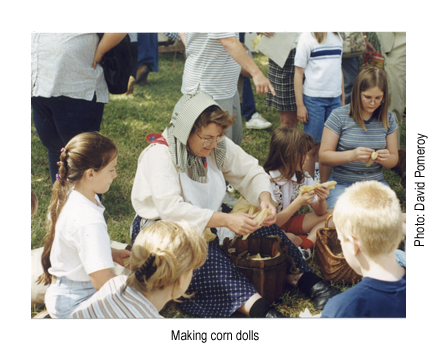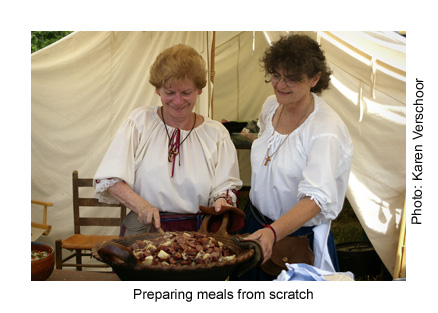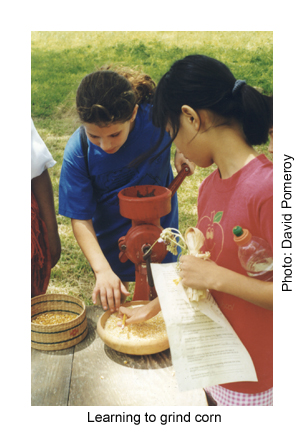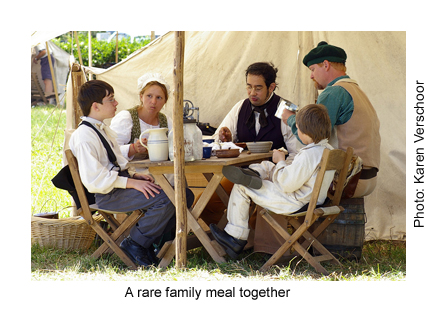Lights, Camera, Action:Re-enacting
One of the Most Important Battles in World History
THE RE-ENACTMENT CAMPS

Three "camps" are set up the night before the re-enactment.
The Runaway Scrape/Civilian Camp focuses on the plight
of non-combatants who were fleeing their homes for safety in the
United States. In the camp, you will find women, children, servants
and a few men (assigned to guide and protect the evacuees) demonstrate
soap making, candle making, cooking and other domestic skills
of the 1836 period. Visitors help make corn husk dolls, spin cotton,
card or weave. They grind corn, haul water or gather firewood.
Children of today are fascinated with the chores children of the
past were required to do. Men are intrigued with how the spinning
wheel works. And women are amazed at the amount of work the women
of our past had to do everyday.




Nearby is the Texas Army Camp. The Texas Army was an army
in name only. The volunteers lacked discipline, training, uniforms,
weapons, tents, and other equipment. Captain Benjamin C. Franklin
and eight volunteers joined the Texas Army on the morning of April
20, 1836. Franklin later wrote: "Around some twenty or
thirty camp-fires stood as many groups of men, English, Irish,
Scotch, French, Germans, Italians, Poles, Yankees, Mexicans, all
unwashed, unshaven for months, their long hair, beard and mustaches,
ragged and matted, their clothes in tatters, and plastered with
mud. In a word, a more savage band could scarcely have been assembled,
and yet many - most indeed, were gentleman, owners of large estates,
distinguished some for oratory, some for science, and some for
medical talent, many would have, and had, graced the drawing-room."
PAGE 3: LIVING
HISTORY VOLUNTEERS
05.07.2013




